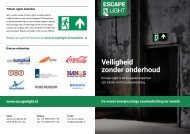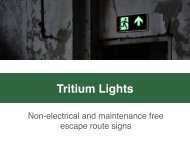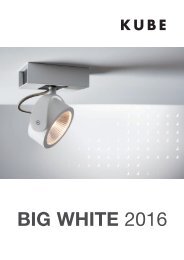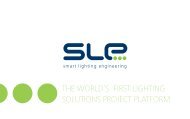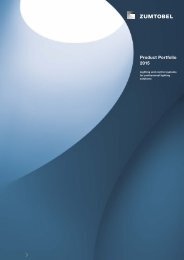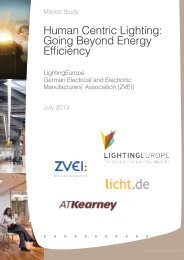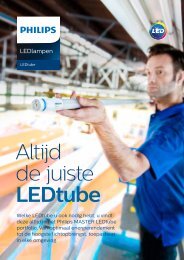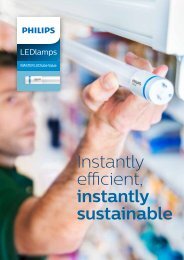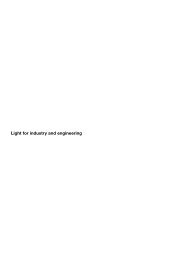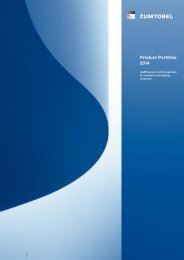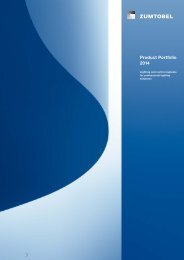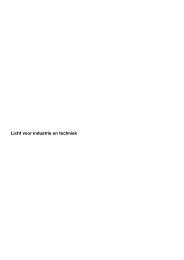LIGHT FOR EDUCATION AND SCIENCE
You also want an ePaper? Increase the reach of your titles
YUMPU automatically turns print PDFs into web optimized ePapers that Google loves.
CORRIDORS <strong>AND</strong> CIRCULATION AREAS 35<br />
Frequency of use as a means for saving<br />
Long opening times in schools and educational facilities often lead to<br />
lighting in circulation areas being left on 24 hours a day. The best way to<br />
save a high level of energy here is an intelligent combination of lighting<br />
control and presence-based control. Light is automatically switched on<br />
and off depending on detected movement. By doing this, zones and<br />
rooms are always brightly lit for users without wasting energy. They are<br />
visually enhanced and enlarged by the light and visitors can find their way<br />
around a lot more easily and simply, even in emergency situations. Escape<br />
routes are marked and illuminated in conformity with relevant standards.<br />
Presentation and exhibition areas demand the special attention of the<br />
lighting designer. A flexibly designed lighting installation even presents<br />
changing exhibits in the right light.<br />
37.28 kWh/m²a<br />
Annual energy requirements of lighting<br />
Luminaires PANOS HF 2/26 W, ARTSIGN<br />
Lighting management LUXMATE LITENET lighting control,<br />
ONLITE emergency lighting<br />
Corridor<br />
Illuminance 212 lx<br />
Uniformity 0.70<br />
Maintenance factor 0.67<br />
Facts<br />
■ Intelligent presence-based control saves up to 40 percent energy<br />
■ Bright lighting avoids tunnel effects<br />
■ Linear arrangement aids orientation in the building<br />
<strong>SCIENCE</strong> <strong>AND</strong> MUSICAL <strong>EDUCATION</strong> CENTER SYMFONIA, KATTOWICE / PL<br />
Architect KONIOR Studio, Kattowice / PL




